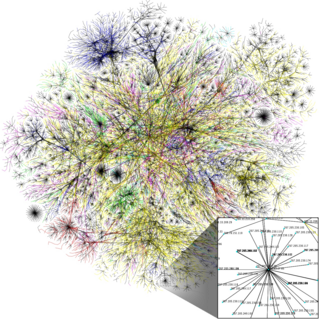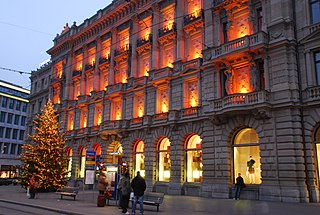 W
WA facial recognition system is a technology capable of matching a human face from a digital image or a video frame against a database of faces, typically employed to authenticate users through ID verification services, works by pinpointing and measuring facial features from a given image.
 W
WBanking secrecy, alternately known as financial privacy, banking discretion, or bank safety, is a conditional agreement between a bank and its clients that all foregoing activities remain secure, confidential, and private. Most often associated with banking in Switzerland, banking secrecy is prevalent in Luxembourg, Monaco, Hong Kong, Singapore, Ireland, and Lebanon, among other off-shore banking institutions.
 W
WBanking in Switzerland dates to the early eighteenth century through Switzerland's merchant trade and has, over the centuries, grown into a complex, regulated, and international industry. Banking is seen as emblematic of Switzerland, along with the Swiss Alps, Swiss chocolate, watchmaking and mountaineering. Switzerland has a long, kindred history of banking secrecy and client confidentiality reaching back to the early 1700s. Starting as a way to protect wealthy European banking interests, Swiss banking secrecy was codified in 1934 with the passage of the landmark federal law, the Federal Act on Banks and Savings Banks. These laws, which were used to protect assets of persons being persecuted by Nazi authorities, have also been used by people and institutions seeking to illegally evade taxes, hide assets, or generally commit financial crime.
 W
WBernard S. Benson was a British inventor and author.
 W
WIn France, the cabinet noir was a government intelligence gathering office, usually within a postal service, where correspondence between persons or entities were opened and read by government officials before being forwarded to their destination. However, this had to be done with some sophistication, as it was considered undesirable if the subjects of the practice knew about it, and "that the black chamber not interrupt the smooth running of the postal service." This practice had been in vogue since the establishment of postal and telegraphy services, and was frequently used by the ministers of Louis XIII and Louis XIV; but it was not until the reign of Louis XV that a separate office for this purpose was created. This was called the cabinet du secret des postes, or more popularly the cabinet noir. Although declaimed against at the time of the French Revolution, it was used both by the revolutionary leaders and by Napoleon.
 W
WThe Cone of Silence is one of many recurring joke devices from Get Smart, a 1960s American comedy television series about an inept spy. The essence of the joke is that the apparatus, designed for secret conversations, makes it impossible for those inside the device – and easy for those outside the device – to hear the conversation.
 W
WCOVID-19 apps are mobile software applications for digital contact tracing during the COVID-19 pandemic, i.e. the process of identifying persons ("contacts") who may have been in contact with an infected individual.
 W
WDigital privacy is often used in contexts that promote advocacy on behalf of individual and consumer privacy rights in e-services and is typically used in opposition to the business practices of many e-marketers, businesses, and companies to collect and use such information and data. Digital privacy can be defined under three sub-related categories: information privacy, communication privacy, and individual privacy.
 W
WA door hanger is a plastic or cardboard sign, generally rectangular in shape, cut to hang from the handle or knob of a door. They are sometimes used to distribute print advertising to residences. Door hangers are often seen in hotels and other places of lodging as a means for guests to communicate with maintenance and housekeeping staff.
 W
WA full-body scanner is a device that detects objects on or inside a person's body for security screening purposes, without physically removing clothes or making physical contact. Depending on the technology used, the operator may see an alternate-wavelength image of the person's naked body, merely a cartoon-like representation of the person with an indicator showing where any suspicious items were detected or full X-ray image of the person. For privacy and security reasons, the display is generally not visible to other passengers, and in some cases is located in a separate room where the operator cannot see the face of the person being screened. Unlike metal detectors, full-body scanners can detect non-metal objects, which became an increasing concern after various airliner bombing attempts in the 2000s. Transmission X-ray body scanners can also detect swallowed items or hidden in body cavities of a person.
 W
WHuman rights applied to encryption is an important concept for freedom of expression as encryption is a technical resource of implementation of basic human rights.
 W
WHyper surveillance is the intricate surveillance of an entire or a substantial fraction of a population in order to monitor that group of citizens that specifically utilizes technology and security breaches to access information. As the reliance on the internet economy grows, smarter technology with higher surveillance concerns and snooping means workers to have increased surveillance at their workplace. Hyper surveillance is highly targeted and intricate observation and monitoring among an individual, group of people, or faction.
 W
WInternet censorship is the control or suppression of what can be accessed, published, or viewed on the Internet enacted by regulators, or on their own initiative. Internet censorship puts restrictions on what information can be put on the internet or not. Individuals and organizations may engage in self-censorship for moral, religious, or business reasons, to conform to societal norms, due to intimidation, or out of fear of legal or other consequences.
 W
WAn Internet Protocol camera, or IP camera, is a type of digital video camera that receives control data and sends image data via an IP network. They are commonly used for surveillance but unlike analog closed-circuit television (CCTV) cameras, they require no local recording device, only a local area network. Most IP cameras are webcams, but the term IP camera or netcam usually applies only to those that can be directly accessed over a network connection, usually used for surveillance.
 W
WMobile phone tracking is a process for identifying the location of a mobile phone, whether stationary or moving. Localization may be effected by a number of technologies, such as using multilateration of radio signals between (several) cell towers of the network and the phone, or simply using GPS. To locate a mobile phone using multilateration of mobile radio signals, it must emit at least the idle signal to contact nearby antenna towers, but the process does not require an active call. The Global System for Mobile Communications (GSM) is based on the phone's signal strength to nearby antenna masts.
 W
WPrivate browsing is a privacy feature in some web browsers. When operating in such a mode, the browser creates a temporary session that is isolated from the browser's main session and user data. Browsing history is not saved, and local data associated with the session, such as cookies, are cleared when the session is closed. These modes are designed primarily to prevent data and history associated with a particular browsing session from persisting on the device, or being discovered by another user of the same device.
 W
WThe Naked Society is a 1964 book on privacy by Vance Packard. The book argues that changes in technology are encroaching on privacy and could create a society in the future with radically different privacy standards.
 W
WNHS COVID-19 is a contact tracing app for monitoring the spread of the COVID-19 pandemic in England and Wales. It has been available since 24 September 2020 for Android and iOS smartphones, and can be used by anyone aged 16 or over.
 W
WNothing to Hide: The False Tradeoff Between Privacy and Security is a book written by Daniel J. Solove regarding the nothing to hide argument regarding privacy. It was published by Yale University Press in 2011.
 W
WNumbered bank accounts are bank accounts wherein the identity of the holder is replaced with a multi-digit number known only to the client and selected private bankers. Although these accounts do add another layer of banking secrecy, they are not completely anonymous as the name of the client is still recorded by the bank and is subject to limited, warranted disclosure.
 W
WIn United States constitutional law, the penumbra includes a group of rights derived, by implication, from other rights explicitly protected in the Bill of Rights. These rights have been identified through a process of "reasoning-by-interpolation", where specific principles are recognized from "general idea[s]" that are explicitly expressed in other constitutional provisions. Although researchers have traced the origin of the term to the nineteenth century, the term first gained significant popular attention in 1965, when Justice William O. Douglas's majority opinion in Griswold v. Connecticut identified a right to privacy in the penumbra of the constitution.
 W
WA safe deposit box, also known as a safety deposit box, is an individually secured container, usually held within a larger safe or bank vault. Safe deposit boxes are generally located in banks, post offices or other institutions. Safe deposit boxes are used to store valuable possessions, such as gemstones, precious metals, currency, marketable securities, luxury goods, important documents, or computer data, which need protection from theft, fire, flood, tampering, or other perils. In the United States, neither banks nor the FDIC insure the contents. An individual can purchase separate insurance for the safe deposit box in order to cover e.g. theft, fire, flooding or terrorist attacks.
 W
WThe secrecy of correspondence or literally translated as secrecy of letters, is a fundamental legal principle enshrined in the constitutions of several European countries. It guarantees that the content of sealed letters is never revealed, and that letters in transit are not opened by government officials, or any other third party. The right of privacy to one's own letters is the main legal basis for the assumption of privacy of correspondence.
 W
WSurveillance is the monitoring of behavior, activities, or information for the purpose of information gathering, influencing, managing or directing. This can include observation from a distance by means of electronic equipment, such as closed-circuit television (CCTV), or interception of electronically transmitted information, such as Internet traffic. It can also include simple technical methods, such as human intelligence gathering and postal interception.
 W
WLatanya Arvette Sweeney is the Daniel Paul Professor of the Practice of Government and Technology at the Harvard Kennedy School and in the Harvard Faculty of Arts and Sciences at Harvard University. She is the Director of the Data Privacy Lab in the Institute of Quantitative Social Science (IQSS) at Harvard, and the Faculty Dean in Currier House at Harvard. She formerly served as the Chief Technologist of the Federal Trade Commission, a position she held from January 2014 until December 2014. She has made several contributions to privacy technology. Her best known academic work is on the theory of k-anonymity and she is credited with the observation that "87% of the U.S. population is uniquely identified by date of birth, gender, postal code."
 W
WTest, Trace, Protect is a government-funded service in Wales, first published on 13 May 2020 by the Welsh Government to track and help prevent the spread of COVID-19. Its aim is to "enhance health surveillance in the community, undertake effective and extensive contact tracing, and support people to self-isolate".
 W
WVirtru is a global data encryption and digital privacy provider founded in 2012. The company is headquartered in Washington, D.C. and has raised more than $76 million to date.
 W
WA webcam is a video camera that feeds or streams an image or video in real time to or through a computer network, such as the Internet. Webcams are typically small cameras that sit on a desk, attach to a user's monitor, or are built into the hardware. Webcams can be used during a video chat session involving two or more people, with conversations that include live audio and video.
 W
WA white noise machine is a device that produces a noise that calms the listener, which in many cases sounds like a rushing waterfall or wind blowing through trees, and other serene or nature-like sounds. Often such devices do not produce actual white noise, which has a harsh sound, but pink noise, whose power rolls off at higher frequencies, or other colors of noise.